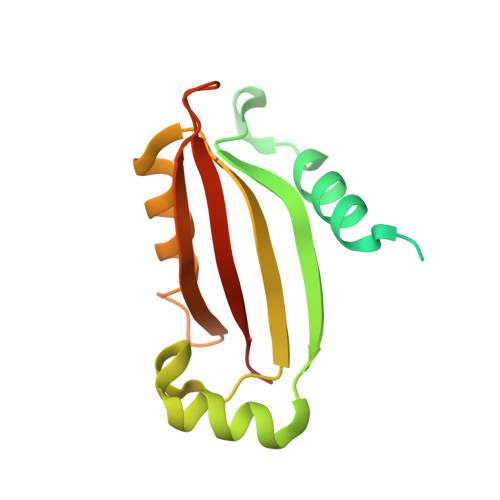Structure and Assembly of an Inner Membrane Platform for Initiation of Type Iv Pilus Biogenesis
Karuppiah, V., Collins, R.F., Thistlethwaite, A., Gao, Y., Derrick, J.P.(2013) Proc Natl Acad Sci U S A 110: E4638
- PubMed: 24218553
- DOI: https://doi.org/10.1073/pnas.1312313110
- Primary Citation of Related Structures:
4BHQ, 4BHR - PubMed Abstract:
Type IV pili are long fibers that are assembled by polymerization of a major pilin protein in the periplasm of a wide range of bacteria and archaea. They play crucial roles in pathogenesis, DNA transformation, and motility, and are capable of rapid retraction, generating powerful motor forces. PilN and PilO are integral inner membrane proteins that are essential for type IV pilus formation. Here, we show that PilN and PilO from Thermus thermophilus can be isolated as a complex with PilM, a cytoplasmic protein with structural similarities to the cytoskeletal protein MreB. The crystal structure of the periplasmic portion of PilN forms a homodimer with an extensive, conserved interaction interface. We conducted serial 3D reconstructions by electron microscopy of PilMN, PilMNO, and PilMNO bound to the major pilin protein PilA4, to chart the assembly of the inner membrane pilus biogenesis platform. PilN drives the dimerization of the PilMN complex with a stoichiometry of 2:2; binding of two PilO monomers then causes the PilN periplasmic domains to dissociate. Finally, two PilA4 monomers bind to the periplasmic domains of PilN and PilO, to generate a T-shaped complex that is primed for addition of the pilin to the nascent pilus fiber. Docking of structures for PilM, PilN, PilO, and PilA4 into the electron density maps of the transmembrane complexes was used to generate a sequence of molecular structures that chart the initial events in type IV pilus formation, and provide structural information on the early events in this important secretion process.
- Faculty of Life Sciences, University of Manchester, Manchester M13 9PT, United Kingdom.
Organizational Affiliation:

















